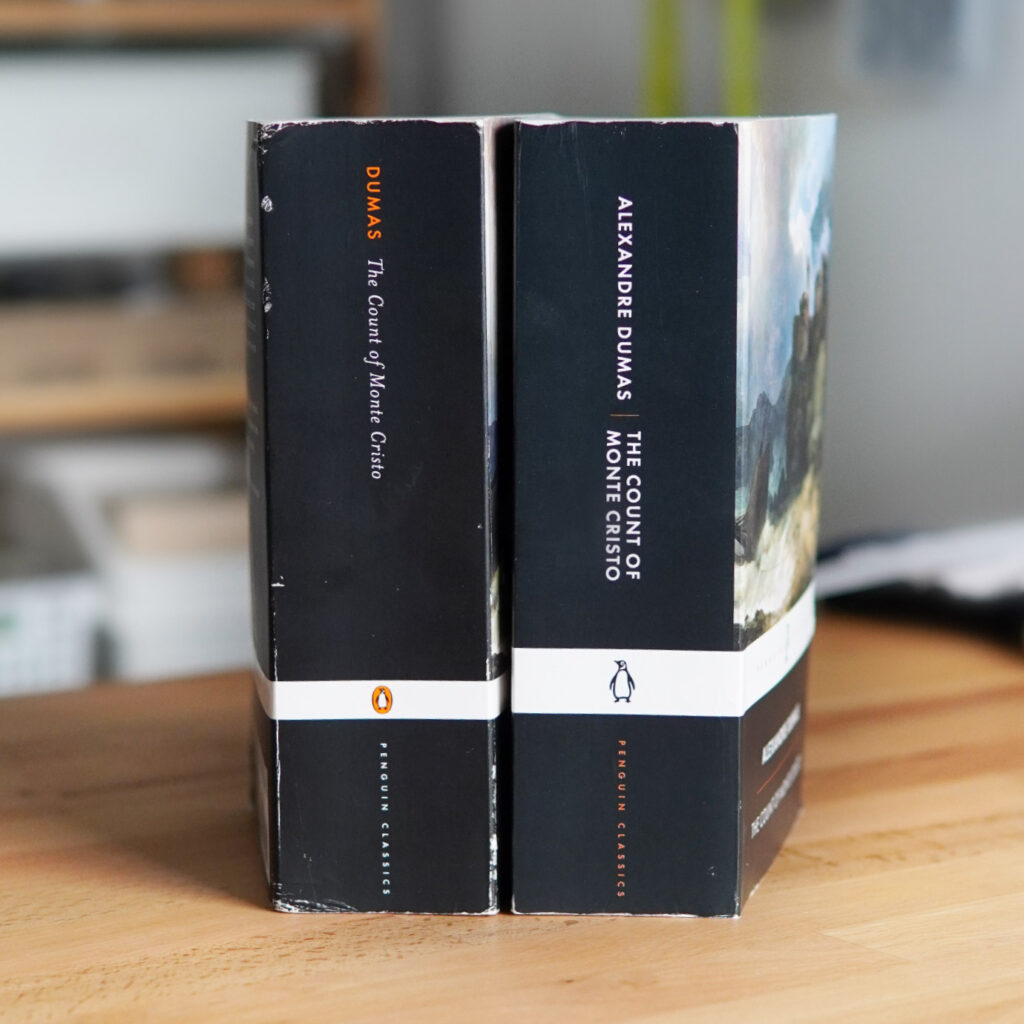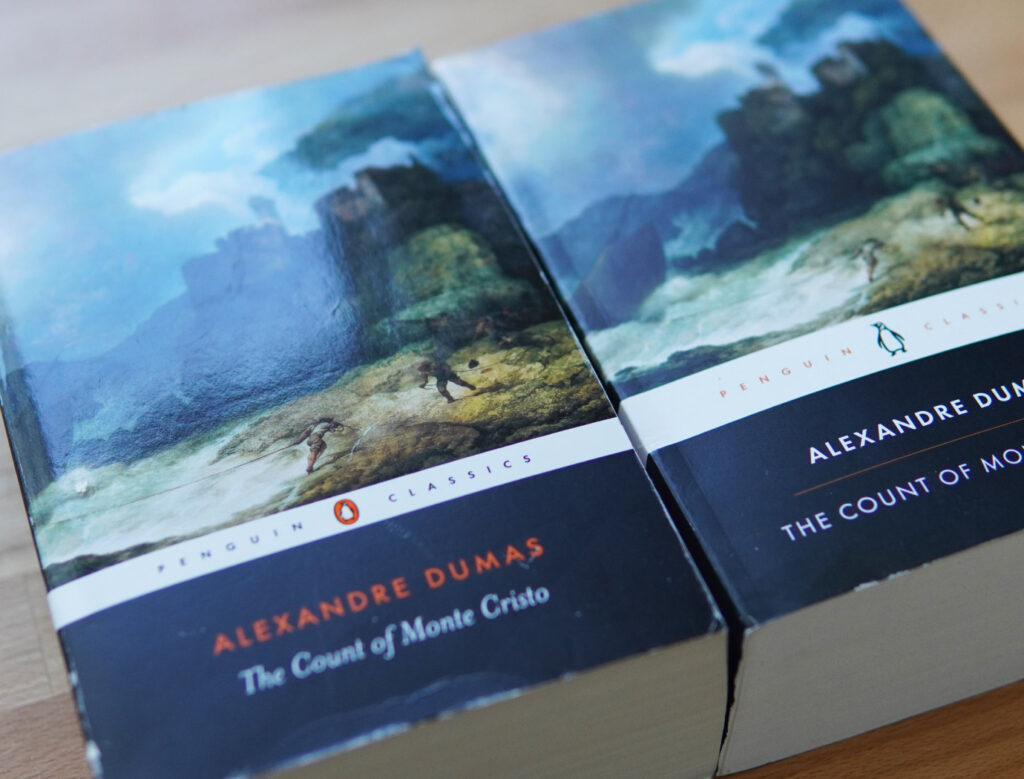Sometime in late July, I found that my interest in the books I was reading was waning. I was finishing up the first of three books in a fantasy series (Robin Hobb’s Liveship Traders Trilogy) and looking ahead to what I would move on to reading once I was done with them. Looking over my bookshelves, I didn’t feel “in the mood” for the few books I had on my to-be-read list, and soon realized that I was feeling a bit lost in my literary journey. The genres I’d been reading were mainly fantasy/sci-fi, some crime/mystery, a few coming-of-age novels, and some historical fiction…all works written within the last 40–50 years. That’s not to say that I hadn’t enjoyed what I was reading, but a certain element of excitement was missing.
Then I thought, “Oh, yeah…right…I have a degree in English Language and Literature”, and my mind turned back to my university days from what feels like a lifetime ago…25 years, to be exact. I flipped through the catalogue of my memories of the materials we studied. There was, of course, Shakespeare’s plays, and later, American literature classics such as Uncle Tom’s Cabin, The Great Gatsby, and a couple of Hemingway’s books, and Gilman’s The Yellow Wallpaper; also some plays like 12 Angry Men and Waiting for Godot. We then covered modern classics such as To Kill a Mockingbird and Toni Morrison’s Beloved. But I was now thinking primarily of the English 18th and 19th century classics that we studied such as Robinson Crusoe, Wuthering Heights, Jane Eyre, and Heart of Darkness. I remember, too, such works as The Scarlett Letter, Tess of the D’Urbervilles, Silas Marner, and Great Expectations.
Interestingly, no Jane Austen.
These stories feel so familiar to me…but then, save for a few books, I don’t remember having actually read them. Perhaps, for limitations of time, we were required only to read certain chapters? I do not recollect. But my interest in these classics was suddenly re-awakened and the excitement I was missing in my reading was found.
I’m not sure why, but it didn’t occur to me to just choose a book to read and go from there. I wanted to do some research first, build anticipation, and compile a list of the books I might like to read. I went on Youtube and searched for “reading the classics” or something along those lines, found a few creators whose personalities and enthusiasm spoke to me, and I was hooked! Their passion for the books they talked about was contagious, and I began to get very excited about reading ALL THE CLASSICS!
Here are the channels I mainly credit with filling me with delightful anticipation and eagerness for reading the classics:
But, if I was going to start reading these books, the question then became, “What editions of classics do I start buying/collecting?” They have to match, after all—I can’t help thinking here of my recent trip to London. I directed my efforts towards answering this question by watching some more Youtube videos that compare the different editions by the most popular publishers of classics, and went on Reddit to see what other readers had to say. I also visited my neighbourhood bookstore to see what editions they might have that I could hold and feel and judge how I might like for myself. I like a floppy book (not a fan of breaking book spines), and one whose copy doesn’t strain the eye. Some decent margins and a comfortable layout are also important.
I eventually concluded to fill my shelves with the black spine editions of Penguin Classics. They usually have very good introductions and explanatory notes, and their catalogue is by far the largest, I think. They also have great English translations for translated works. They’re more consistent, generally, in the size and clarity of fonts they use, and offer good margins for notation. There are exceptions (I’ve found that their books printed in the United States have more inconsistencies, as do some of their classics that deal with old/historical texts), but overall, they are few.
I do also like the Oxford World Classics, as they too have a wide range in their catalogue and provide excellent notes, and the books feel good to hold, but unfortunately, they’re a bit hit or miss when it comes to their fonts and text clarity (blurry/chunky copy).
But—
I then learned that around 2019, Penguin redesigned the look of their black spine classics series and started gradually rolling out their catalogue with the new cover design. Let me state here that I thoroughly dislike their new covers. They are much lacking in character and look much too modern for a collection that has “Classics” in its name.

But even if I were to set aside my dislike of the new look, the other drawback is that key elements in the new design don’t match up with those of the old, neither in style nor in placement. When the books are lined up on one’s bookshelf, the consistency is broken when the old covers mix with the new (if one were to organize their books alphabetically, for example).
Seeing two books next to each other (as pictured below) isn’t so bad, but if you had shelves full of these Penguin books, as I planned on having, the invisible yet perceptible line of zig zag created by the different banner sizes that would run across one’s shelves, with other stylistic differences sprinkled in between, would be a visual mess. In the grand scheme of things, it’s not a big deal, but it’s enough to put me in a state of unease.

So then, okay, fine, I can organize my books in two sections so that the two styles of books don’t mingle. I can live with that.
However, upon actually holding one of their new books in my hands, it became clear that the print quality of these new versions is inferior to the previous editions printed 20 years ago. They got rid of the finer finishes on their previous covers (gloss application on the cover image and logo), and the binding is tighter, adding more stiffness to the spine and making for a more rigid book-holding and reading experience. The paper is thinner and of slightly decreased quality, and the copy ink seems to sit on the surface of the pages rather than settle into their fibres. I often underline parts in pencil or write short comments in the margins, and with these new editions, the ink lifts easily if I attempt to erase these markings and inadvertently, and often unavoidably, rub over the words as well. One might say I’m nitpicking, but if you’re familiar with the Penguin Classics of old, there’s no mistaking the shift in quality.

Overall, there is enough for me to dislike about these new versions of Penguin Classics that I very much prefer the older editions…which means that I now have to pretty much shop for them secondhand.
This isn’t a problem, of course, but it is a challenge, as it means having to continually visit secondhand bookstores where it is left to chance as to whether or not I’ll find what I’m looking for. Thrift stores are also an option, but the non-profit ones (Salvation Army, Goodwill, etc.) are few around my area and mainly found in the suburbs, and we recently found out that the for-profit thrift store whose many locations we used to frequent has ties to the occupying apartheid illegal “state” that shall not be named and have therefore boycotted it.
Now, you might ask, “Fin, how about buying the secondhand books online?” Well, that’s where Penguin makes things even more infuriating. Penguin doesn’t change the ISBN numbers of their books when they re-print them with the updated covers—the same ISBN number is used for a particular book whether it has the old cover or has been re-printed with the new one. Several times did I order a book from eBay or an online secondhand bookstore from listings that show the book’s image with its old cover, only to open the envelope when the book arrives in the mail and find that I’ve been sent a copy with the updated cover. I eventually caught on to the ISBN issue and resolved that if I do order from eBay, I shall only do so from small sellers who have photos of the actual physical book on their listing, rather than a stock image.
Furthermore, Penguin’s own website, on which you can search through their entire catalogue, doesn’t always have the updated cover image of their books. Even my local bookstore can’t know what version of a book they’ll get directly from Penguin if I place an order through them because their database pulls a stock cover image from another central database that may not be updated. So basically, unless I know for sure that a book has been re-printed with the new design (and can therefore avoid it), if I order a book online that is pictured with the old cover design, it’s a gamble.
Urgh!!
*Sigh*
Sometimes I do get fed up with the search for them and will “settle” for a different edition if a sudden urge comes over me to want a certain book and I can’t find it in the black spine version. For example, I do also like the Penguin English Library classics, mainly because they are very comfortable to hold, but the downside is that they have no explanatory notes, which I really value having. I have found a workaround for this, though, and will expand on it in the next post. And as previously stated, the Oxford World Classics are sometimes an acceptable choice, especially if I’m after a particular translation of a book or if Penguin doesn’t have it in their catalogue.
But I do love these (older) Penguins, and will likely always prefer them over other editions if given the choice.
